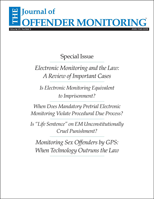Testing and Monitoring Products Facilitate Smart Justice for DWI Offenders
Author: Peggy Conway.
Source: Volume 23, Number 01, Spring/Summer 2010 , pp.13-16(4)

< previous article |next article > |return to table of contents
Abstract:
In 1993, Robert Lilly, Richard A. Ball, G. David Curry and John McMullin published the results of a seven-year study of electronically monitored drunk drivers in the journal Crime and Delinquency. It was among the first research efforts to examine the long-term impact of EM on DUI offender recidivism and it concluded that EM reduces recidivism for DUI offenders during the period of EM supervision but probation success declines during the post- EM period—once supervision is discontinued, there seems to be little residual benefit. Subsequently, the use of RF home curfew combined with alcohol testing for DUI offenders became a widely used sanction. The success of ignition interlock products, first introduced in 1986, formed a solid foundation from which a range of more advanced testing and monitoring products emerged. In recent years less attention has been paid to advances in EM-based approaches to DUI as programs targeting sex offenders have grabbed the headlines. However, in a survey conducted in 2008,73% of all agencies with EM programs2 (n=100) reported having DUI offenders/ defendants on some form of electronic monitoring (EM) technology while 56% reported use on sex offenders.3 Even with the explosive growth of EM applications for a range of offenders, drunk drivers are still the most common EM client. This article discusses those programs and products.Keywords: ignition interlock; RF home curfew equipment; speech technology’ continuous alcohol testing
Affiliations:
1: Journal Editor.